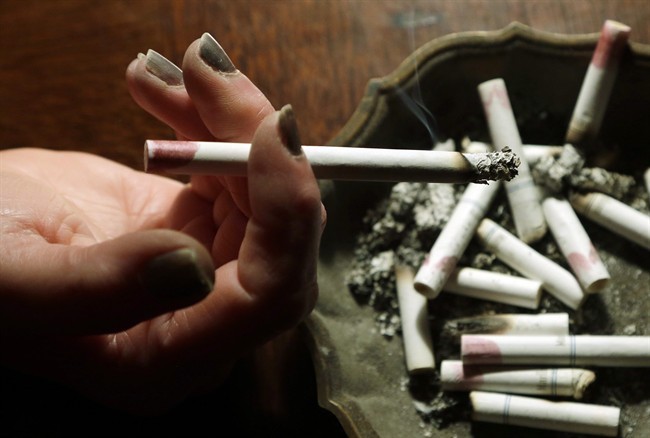TORONTO – Canadian researchers are handing parents yet another reason to consider butting out: a Montreal study suggests that secondhand smoke not only hurts a baby’s development but it also plays a part in determining childhood behaviour.

The scientists at University of Montreal and Sainte-Justine University Hospital say their findings are the first to consider the effects of secondhand smoke not only on health, but neurological growth of kids from birth to early childhood while controlling for a string of factors.
They suggest that exposure to secondhand smoke, even in transient amounts, is enough to trigger aggressive and antisocial behaviours in children.
“At birth to age seven, the brain is undergoing a really important developmental period – its maturation is in high gear,” according to Dr. Linda Pagani.
Pagani has conducted research for the past two decades in the field of studying child development and readiness for school. She’s spearheaded Canadian research on the effects of television on children and has turned to research to understand why some kids are more prepared for kindergarten than others.
“What we have to do is consider the fact that environmental smoke doesn’t go away. Children live and play in environmental smoke and at the same time, young children are being exposed at a critical time period of brain development. Putting all of that together creates a fantastic study – we know of the carcinogenic risks, the respiratory risks, that’s established, however not a lot of people talk about the neurological risks,” Pagani said.
Read more: Smokers who quit before 40 save a decade of their lives: study
- Life in the forest: How Stanley Park’s longest resident survived a changing landscape
- ‘Love at first sight’: Snow leopard at Toronto Zoo pregnant for 1st time
- Carbon rebate labelling in bank deposits fuelling confusion, minister says
- Buzz kill? Gen Z less interested in coffee than older Canadians, survey shows
Her team turned to data collected by Quebec health officials – about 2,055 kids born in 1997 had their health tracked from birth to 10 years old. The kids, their teachers and their parents were surveyed and interviewed for the study. Observers even went home to study parent-child relationships.
Results showed that kids who were exposed to transient amounts of secondhand smoke – say, a family member who was cycling through quitting and returning to smoking – and chronic exposure said they had the most problems with being antisocial or aggressive.
There was little difference between the kids who reported little and lots of exposure: across the board, the 10-year-old kids in Grade 4 admitted to fighting more, attacking others by hitting, biting or kicking their peers. They also conceded to being more antisocial instead of building friendships.
These groups were 11 per cent more likely to report these issues compared to kids who didn’t have secondhand smoke in their households.
“That’s significantly higher,” Pagani said.
Read more: Reality check: Do babies inherit junk food addictions from their moms?
Regardless of family income, mom’s education, maternal depression, exposure to domestic abuse, hostile parenting and a string of other factors the study controlled for, these results remained.
“This all has to do with frontal lobe development (in the brain). That’s really crucial and critical in the first five years of life,” Pagani said.
It’s that part of the brain that helps us with emotions, impulsivity, problem solving and decision making. The expert suggests the secondhand smoke may be stunting the growth of this part of the brain.
Pagani said her findings remind health officials and families that young brains aren’t fully developed and that the dangers of secondhand smoke on child development extend beyond pregnancy.
“We forget that that. We see kids and we think they’re just like adults, but their (minds are) just as undeveloped as their bodies or their faces are,” she said.
Read more: Reality check: Is light drinking during pregnancy safe?
Secondhand smoke is more dangerous than smoking a cigarette, researchers say. Eighty-five per cent is side stream emissions made up of 250 toxic chemical gases and metals. Health Canada even pegs 70 of these chemicals as cancer-causing or contributing directly to asthma, heart disease and emphysema.
While the smoke may appear to dissipate, Pagani says the smoke lingers, suspended in your home where your kids eat, sleep and play.
Infants and kids have ventilation needs that are two to three times higher than adults. Simply put, they breathe more, and in turn they’re taking in much more nicotine concentrations from secondhand smoke than adults.
Pagani’s findings were published Tuesday in the Journal of Epidemiology and Community Health.
carmen.chai@globalnews.ca
Follow @Carmen_Chai




Comments